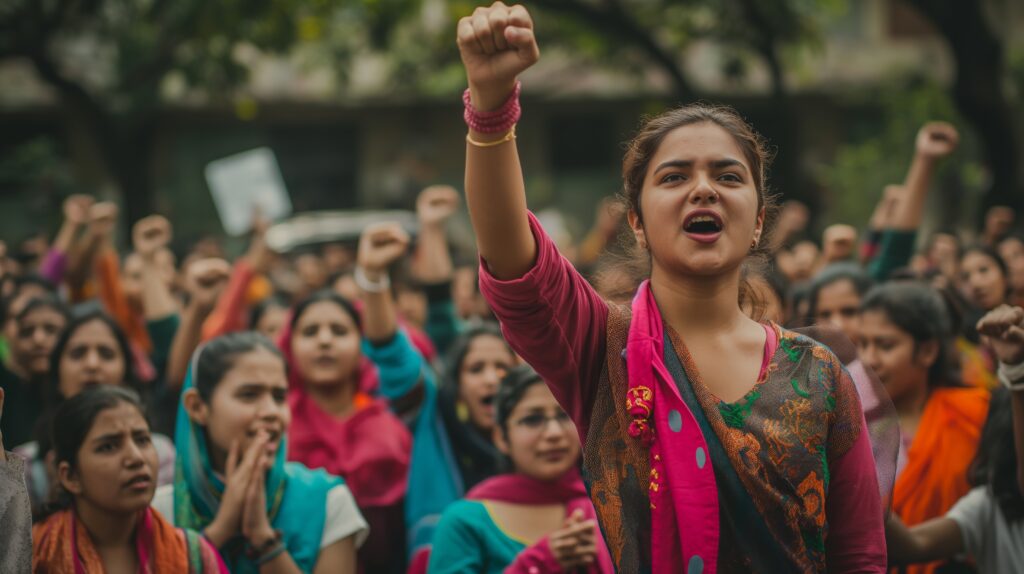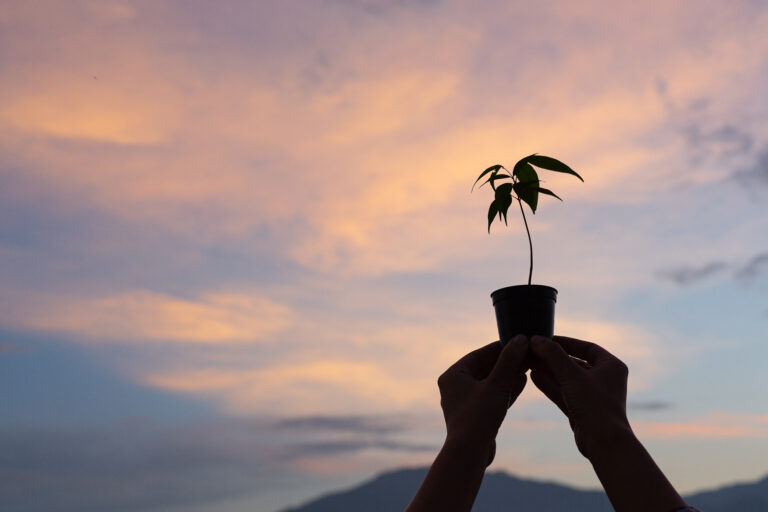Genesis of Human Rights Movements in India
Dr. Alok Kumar Ray
Human Rights Movement in India took its birth on the basis of striving towards the promotion and protection of rights of individuals and groups, often mediating between them and the state. In the last quarter of the 20th century Indian society witnessed a growing recognition and relevance of human rights essentially due to the pressure exerted by various human rights movements. The reasons for the increased attention towards human rights have their roots in the denial of life and liberty that was a pervasive aspect of the emergency (1975–77). The absence of democratic rights during those eighteen months sensitized people towards the human rights violations happening around. This period also encouraged students, intellectuals, political activists, and many other sections of civil society to involve in human rights movements. Thousands of people joined massive rallies to protest against the anti-democratic acts of the government and to mobilize public opinion to safeguard democracy in India. The National Emergency of that time dramatically exposed not only the inadequacies of the post-independence developmental strategies adopted by successive governments, but also the continuing impoverishment and marginalization of millions of people–a process which was increasingly recognized as inherent in the very model of development. Forty years of “democracy” of popularly elected governments have brought little benefit to the bottom 40 percent of India’s population. Distributive justice, popular participation, wars on poverty–all these still remained by and large, pious intentions. Thus the Emergency period is often considered to be a turning point in the history of human rights movement clearly demarcating the later movement from the earlier one.
The first human rights group in the country – the Civil Liberties Union – was formed by Jawaharlal Nehru and some of his colleagues in the early 1930s with the specific objective of providing legal aid to nationalists accused of sedition against the colonial authorities. However, this effort was short lived. The excitement and hopes generated by the national liberation subsumed the political spirit of an independent watchdog initiative. The human rights movement in the post-independence period is generally divided into two phases: pre- and post-Emergency. The Civil Liberties Committee was formed in West Bengal in 1948 to protest against the state repression on the communists. There is no recorded account of this phase of the movement. The major civil liberties movement began in the late 1960s with the brutal attack by the state on the Naxalites. This movement raised the issue of democratic rights’ of the oppressed sections of society for justice and equality. The struggle for democratic rights in spirit is the struggle to affirm the rights already guaranteed formally by the constitution but not ensured in practice. Denial of democratic rights takes the form of an attack on the right to affirm rights already guaranteed. This was prompted when both the privileged social classes and the government methodically suppressed groups fighting for the rights of traditionally oppressed peoples such as landless labor, marginal and small peasants, the unorganized working class and their mobilizes and supporters. Some prominent amongst these were the Association for the Protection of Democratic Rights (APDR) in West Bengal, the Andhra Pradesh Civil Liberties Committee (APCLC) and, somewhat later, the Association for Democratic Rights (AFDR) in Punjab. These groups brought into light the growing oppression and ill-treatment in the rural areas and played a vital role in tackling and’ exposing the violent role of the state. But their maneuvering capacity to touch the imagination and to engage concerned liberal and progressive elements was very much limited. The impact of these organizations was limited as they were divided and sectarian in nature. During that time apathy of the media and public opinion towards the difficulties of the deprived sections of society was rampant. There was no initiative to highlight the correlation between political with socio-economic issues. During the Nehruvian era from 1947 to the mid of 1960s most of the social and political activism which triggered at corresponding certain interests sprouted from political parties or from groups and movements within the national and state level parties. The Congress Party at that period propagated a developmental path which tried to balance democratic Socialism with Capitalist growth. Such a holistic attempt got positive notes with the conservatives and the leftists within the opposition like Swatantra Party, the Jan Sangha and among Communists and Socialists. When Jayaprakash Narayan initiated a major agitation against the mounting totalitarianism of Mrs. Gandhi, a large number of well-known liberals and humanists in collaboration with radicals in 1975 formed the first (and only) national human rights organization, the People’s Union for Civil Liberties. Subsequently, due to a number of political developments the concerns for the rights of the poor and subjugated were consolidated. The issues of agitating middle class dissidents also got a voice to ventilate their grievances. The announcement of the Emergency on June 26, 1975 however, proved to be a major game changer. The national consciousness was stimulated with the locking up and banishment of intellectuals and political activists. A new meaning was assigned to the understanding of Indian democracy. In an effort to suppress opposition, thousands were put behind bars and some for the entire period. The press was silenced, and new legislations were brought in to curb both traditional and emerging challenges to the centralization of power. Through the politicization of influential journals, the rise of a spirited literature of dissent was diverted for vested interests. The government suspended all fundamental freedoms. In the mean time due to cracked down of activities of human rights organizations, censorship of media, torture and imprisonment of political activists , the opposition movement met brutal setbacks. Even after the defeat of Mrs. Gandhi at the general elections in 1977, these civil rights activists for almost two years remained in inertia. This was mainly due to a widely shared perception among lawyers and academics that the new government would be more open to dialogue and corrective measures. During this period the rise of investigative journalism and public interest litigation petitions along with some important socio-economic achievements by the more radical groups working with the landless and the tribals were noticed. There were found plural identities like those of caste, gender, tribe and ethnicity on the rise. That changing social landscape was important because though the Janata government was politically more liberal than the Congress Party; its social base was more conventional and damaging to the lower classes. Even in the post-emergency period, the Janata Party that had earlier raised the slogan of ‘Democracy versus Dictatorship’, after came to power with popular mandate, brought into force draconian laws such as Preventive Detention Act, Industrial Relations Bill and condoned Essential Services Maintenance Act and Disturbed Areas Act to repress the toiling poor. During 1980s, those who were concerned only about formal democracy joined hands together to drive forward ‘civil liberties movement’. And organizations working against repression of the workers, poor, peasants, dalits, women and tribal people came under the umbrella of ‘democratic rights movement’ The electoral scenario during that time demonstrated the fact that Congress Party at provincial levels was being challenged by region based political groupings. In 1980, after the fall of the Janata government and the return of Mrs. Gandhi to power, an enquiry commission i.e. Kudal Commission was instituted to look into cases of corruptions amongst human rights organizations. During that time a major National Convention of civil society organizations was held in Delhi. After this convention the PUCLDR divided into two organizations – a Delhi based PUDR and a national PUCL. Now, there exist a great number of organizations specifically working with issues of civil liberties and democratic rights. Most of these organizations are those which were formed between 1968-1970 and 1975. It is also important that there are in India thousands of groups and movements working tirelessly for distributive justice. There are also advocacy and support groups. All these can be grouped as human rights groups. The sole purpose of these is to emphasize and guard human rights. In periods of foremost crises, independent actions and mass activities by these movements have been able to provide respite and rehabilitation and carrying out lobbying on behalf of the exploited and the victimized. This collaboration was clearly evident following the bloodbath of the Sikhs in November 1984 after the assassination of former prime minister of India, Mrs. Indira Gandhi, and the Bhopal chemical gas leakage tragedy a month later, India against Corruption Campaign in 2007 and in New Delhi in December 2012 following the gang rape of twenty-three-year-old physiotherapy student Jyoti Pandey. In the later case the protesters made varied and lengthy demands for improving public safety for women, including calls to make public transportation safe; to encourage the police to be more responsive; to reform the judicial process, including reform to the Indian Evidence Act, the Penal Code, and the sentencing standards; and to generally provide for greater dignity, autonomy, and rights for women. In their course of actions these groups have been able to produce extensive literatures which highlight the intricate causes of social, political, economic and cultural oppression.
There have been noteworthy achievements due to these groups in mitigating some of the multifarious sources of oppression. Bonded laborers have been freed and rehabilitated, major judgments by the judiciary have opened up new avenues for the realization of justice, and corrupt public officials and policemen have been prosecuted in many cases. Their efforts in 1980s helped in redrafting of the rape and dowry law, launching of a national campaign on housing rights, introduction of a private bill on child labor in the parliament and stalling of the forest bill. In the 1990s these organizations campaigned in favor of women’s rights and changing long standing biases against women. In 2005, women’s human rights organizations successfully ventilated their views for the formulation of a bill on domestic violence. Of late they were raising the issue of ‘rights of people to a clean, healthy and regenerative natural environment.’ In the arena of politics, these organizations are sphere heading campaign for electoral reforms. The right to information, one of the most empowering of citizen’s rights, was the result of tireless effort of these human rights and civil society organizations. These organizations are engaged in opposing violation of civil liberties and doing research, documentation and dissemination of information regarding violation of civil liberties by the government and other armed groups. After all these groups have kept the democratic movement alive among a section of the urban middle class, as well as helped protect and, to an extent, expand the spaces for independent political action. They have thus made an explicit contribution in enlarging, even if marginally, the base of democratic consciousness in the country. As the impact of these groups has provided them greater legitimacy, it has also at the same time brought regular attacks from vested interest groups, both within government and outside. As a result, some human rights activists have been tortured and killed, publications have been banned and their authors charged with sedition and imprisoned. The ruling parties have launched a defamation campaign against some groups (particularly PUCL, PUDR and APCLC) and endeavored to name them as antinational or extremist. Through all this, each organization has retained a distinct identity. And although organizational and methodological differences distinguish them, there has been close collaboration amongst most of them. Our democratic ethos will remain intact for years to come as these organizations are performing the role of the watchdog, undoubtedly forging ahead a movement to sustain the democratic system against occasional outbursts of authoritarianism.
Dr. Alok Kumar Ray
Head of the Department of Political Science,
V.H.J. Mahavidyalaya, Nikirai
Kendrapara, Odisha, India.




